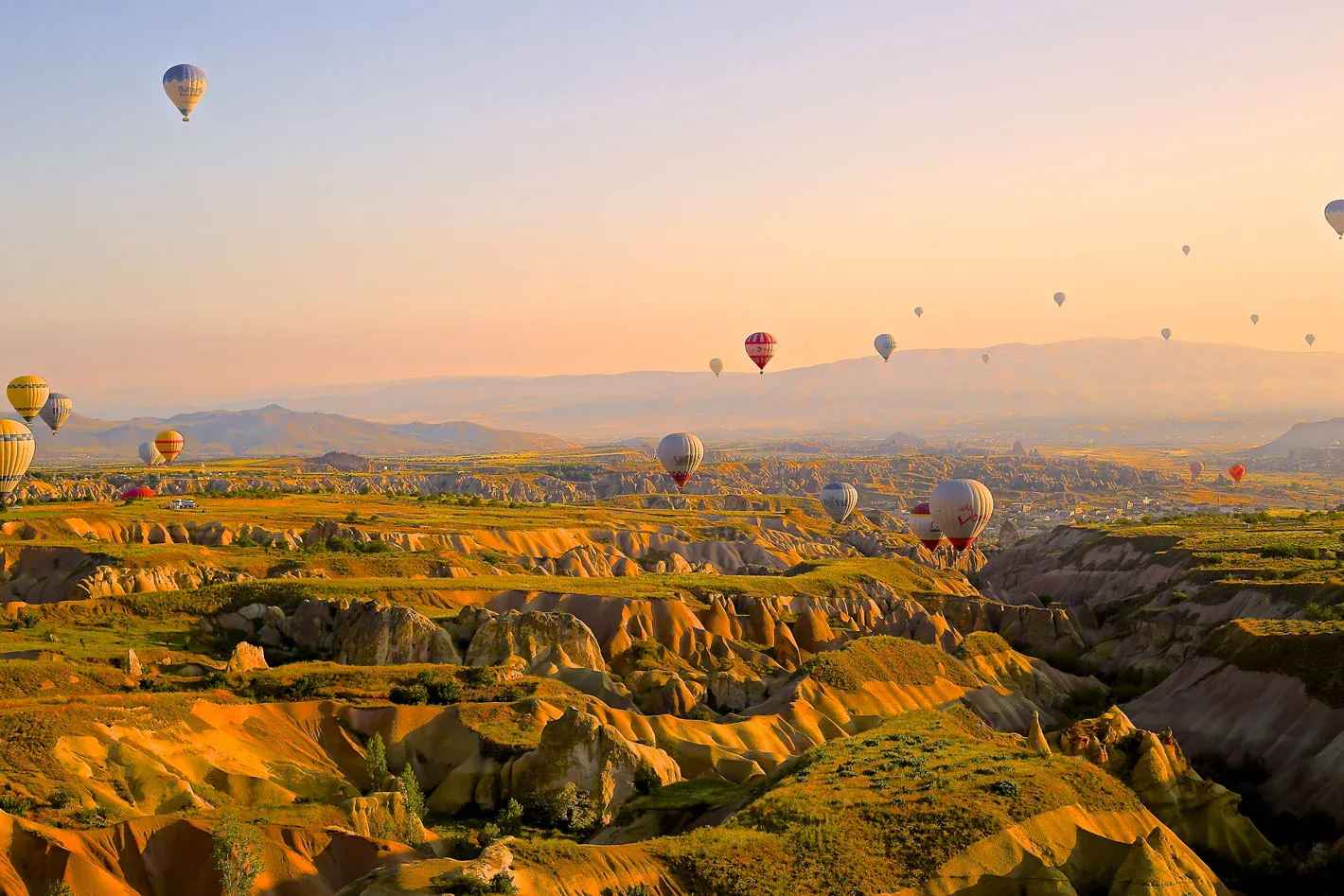Let’s embark on a fascinating tour across northern Spain, whose major aim is the observation of solar eclipse below the horizon. This celestial event was never observed, therefore you have a chance to see it this spring. The eclipse event culminates on Monday, April 8 evening at nautical twilight. We are looking forward to seeing the spectacular shadow movement across the western sky.
On the occasion, you will have an occasion to see several UNESCO sites in northern Spain and take a nice hike in the Cantabrian mountains, which give you an unforgettable experience.
GENERAL INFORMATION
/Car hire/
-> Credit Card is required for car rental
-> Passport is required for car rental
PLAN OF JOURNEY
Day 1
As planned we will do our best to land in Bilbao Airport around noon. If you are flying from Krakow you will have only 40m of stopover, which might be hard, although for other directions maybe the timetable will be more favorable. The KML flight from Amsterdam Schiphol departs at 9:15 am and lands at 11:15 in Bilbao.
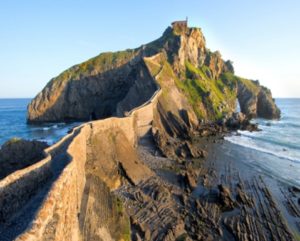
This day is quite short, but we will try to see something nearby the Bilbao. Our first port of call will be the San Juan of Gaztelugatxe, where the hermitage dating from the 10th century is located. The old church itself is located at 80m.a.s.l. isn’t interesting on the contrary of the whole scenery. The Gaztelugatxe islet was used for shooting the footage for Game of Thrones. The Gaztelugatxe islet stood in for Dragonstone. At the top of the islet was a massive castle created digitally. This place is marvelous and surely will be watched from the viewpoint located nearby, although our goal is to reach the top after about a 1.5km walk.
The later part of the day is the transfer to our first major destination, which is the Picos de Europa National Park. We realize, that a 3-hour drive might be quite boring, so we can offer a short pop-out to the UNESCO-listed Vizcaya Bridge on the way and the necessary shopping.
Day 2
This day we are planning to go on a nice hike in the Picos de Europa National Park. There are some places worth visiting and admiring mountainous landscapes like Invernaleds del Texu. At the end of the day, the funicular will take us to the Mirador de Urrielu to admire the highest summits of Cordillera Cantabrica.
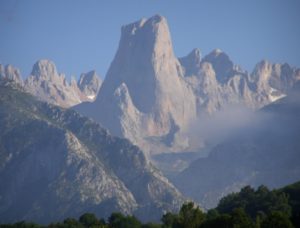
Day 3
Another day in Picos de Europa National Park, where the long and picturesque trekking is planned to the Cain de Valdeon village. In the case of bad weather, we will spend this time in Oviedo, where we can find UNESCO-listed objects like Camara Santa de Oviedo.
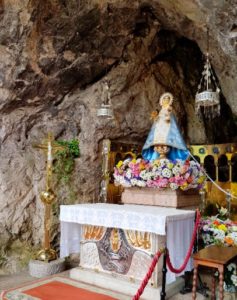
Day 4
On the last day in the Picos de Europa National Park, our aim visit will be the Covadonga Lakes area, where a short walk is expected only when the weather allows. If not, we are going straight to the Covadonga Sanctuary and the Oviedo town center at the end (assuming, that we haven’t been there a day before). However, the major destination this day is the highest cliffs in the Iberian Peninsula — Vixia de Herbeira. This is the best-recommended place for the total solar eclipse below the horizon observation. We are going to arrive there a day before and carry out the pre-eclipse twilight observation, which will cover the light level measurement and consequent photography of the scene. The observation should begin shortly before sunset and finish at the end of astronomical twilight. The Vixia de Herbeira region features the Bortle 3 scale, which should be enough for a valuable twilight observation as far as the end of astronomical twilight is concerned. The observation will help to understand the solar eclipse’s impact on twilight. It could be vital to make it from the same place where the eclipse will be observed, but concerning dynamic weather in this part of Spain, it might be difficult.
Day 5
The eclipse day will mean staying close to the observation point in the case of good weather. The only place to visit is the northernmost tip of the Iberian Peninsula. This is the most confident point on our route. If you wish to see the sunrise, the other one — Cape Ortegal, is located just 4km from our hotel. Optionally we can spend the early afternoon in the Retorda’s Grove — the home of giant eucalyptuses. Assuming, that the weather isn’t good enough for the eclipse observation we have to find a good place allowing for it, which can be located even up to a 5-hour drive from our hotel! In the case of good weather, we will go again to the Vixa de Herbeira place and observe the eclipse’s impact on twilight, which will include:
— the image sequence of twilight,
— measuring the light level changes,
— measuring the sky surface brightness,
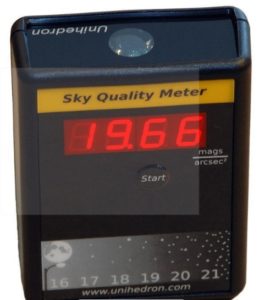
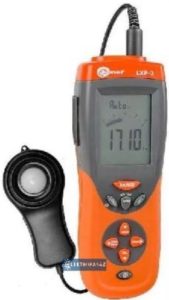
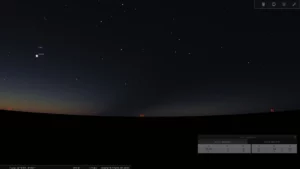
More
More details about the observation guidelines can be found in this article.
Day 6
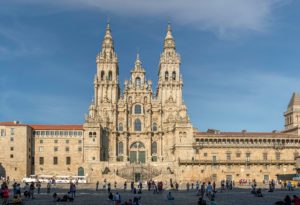
This is the day of visiting Santiago de Compostela city — the most sacred place in the whole of Spain and the capital of Galicia. We will enter the city from the modern Citadelade Cultura de Galicia for a brief outside sightseeing. Next optionally, we can visit the Colegiate de San Maria de Sar. The most important place to see where all the pilgrimages come from is the Cathedral de Santiago de Compostela, which prevents the original Romanesque interior. The objects stand vis-a-vis the Praza de Quintana — the major square in the city center. We would love to take a tour of the cathedral as well as visit other interesting places like the Monastery and Hospital of San Martino Pinario. Interesting will be also Parque de Alamanda with adjacent Igrexa de Santa Susana and Miradirio de Cathedral Santiago de Compostela just next to it.
Our trip will be finished at Monte Pedroso viewpoint offering a beautiful panoramic view of the city of Santiago de Compostela.
Day 7
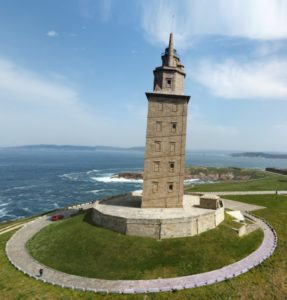
This day marks another interesting trip to the second city worth attention. We will visit A Coruna, which is the largest city in Galicia with over 220K inhabitants. Our first port of call will be the Museum of Science and Technology. This is only one object on the whole trip, which is somewhat an alternative to the NASA Space Center in Houston. We can see there the development of technology from Spain and some bits from Western Europe. You can find there the current airplane models, etc. We are planning to spend a couple of hours in this worth visiting place. Next, we will go to the landmarks, for which A Coruna city is known. This is the Tower of Hercules. This is the Roman lighthouse, which marked the strategic position of the city in the maritime trade. It’s not the only remarkable site to visit in this city, therefore we will head to the center afterward. There are some places to visit there like the Castello de Santo Anton or Teatro Rosalia di Castro. The heart of the city center is the Praza de Maria Pita and Colegiata di Santa Maria di Campo. Moreover, we are planning to visit the Igrexa de San Xurxo and take a short trip to the marvelous castle located on the opposite side of the isthmus — Castelo de Santa Cruz, which will be visited from outside. Finally, we will stay in Lugo.
Day 8
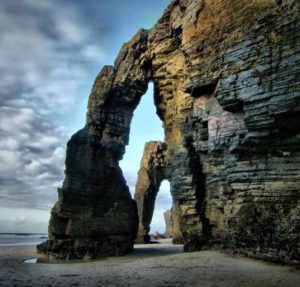
This day is aimed at visiting the western part of Cordillera Cantabrica. However, if the weather isn’t good enough we can stay until lunchtime in Lugo. That’s why the accommodation is planned there. Lugo is known for its UNESCO-listed Roman walls. This is the only city in the World surrounded by intact Roman Walls reaching 10-15m in height. Their total distance is over 2km including 71 towers.
Cathedral Beach is an amazing geological wonder of Northern Spain, where we can find a lot of natural arches and caves possible to see during low tide. They are made by coastal erosion of slate and schist. At last, we will approach the Parque Natural de Babia y Luna with a picturesque viewpoint at Puerto de San Lorenzo. Assuming, that we won’t spend a long time in Lugo in the morning, our next port of call is interesting Teverga Prehistoric Park, which is represented by various prehistoric cave paintings. The park is open to the public till 2.30 pm, although in the case of pre-booked guided tours, we can visit it till 6 pm. The guided tour is about 30 min. This is not only one attraction in the western part of
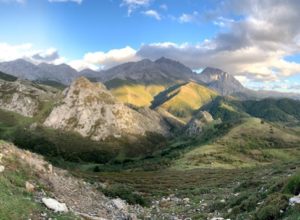
Cordillera Cantabrica. As there are a lot of picturesque routes, which zig-zac back and forth we are going to make a few stops on the vantage points, from which you will admire the beautiful view of the mountains.
Day 9
This day is marked by easy-going trekking in the mountains around the Tuiza de Arriba village. We are planning to reach the mountain hut located over 1500m.a.s.l. and get by car to the Puerto de La Cubilla pass. If the weather is clear providing great visibility conditions, we will do the intensive trekking as high as possible towards Picos del Fontan (over 2400m.a.s.l.) to capture the Central Chain rising above Madrid and located over 300km ahead.
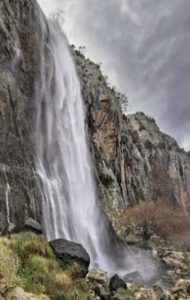
Day 10
This is effectively the last day of our journey. We are on the way back to the Bilbao Airport. We will set off from the Parque Natural de Babia y Luna in the early morning and drive a long way eastward. However, the route won’t lead along the coast. We are planning to watch the mountainous landscape with cozy villages on the way. The major stop planned for this day is estimated in the Asón and Gandaria River valleys, where we can see the beautiful waterfall and fantastic river meanders. Moreover, the route will be wealth with mind-boggling viewpoints (Portillo de Lunada, Colladó de Asón, Mirador de Gandaria). We will arrive the Bilbao Airport in the evening where we will drop off our car.
Day 11
We are flying very early. Our flight to Amsterdam is scheduled for 6:50 am. This is the end of our eclipse journey.
Detailed information:
http://workshop.astro-geo-gis.com/files/travel/Spain 2024.pdf
Map:

